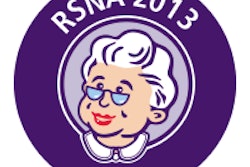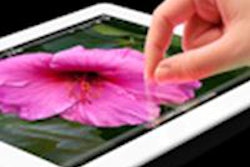Maybe there's a reason radiologists work in dark rooms. A new study has found that the ability to interpret images correctly with mobile displays begins to decline if the devices are used in ambient light conditions brighter than the average office.
In a pair of experiments, a team led by Peter Liu from the U.S. Food and Drug Administration's Center for Devices and Radiological Health (CDRH) found that it may be unsuitable for radiologists to read images on mobile devices in ambient light providing illumination of more than 1,000 lux (as would be the case outdoors and in any illumination beyond standard office conditions).
Radiologists should be particularly cautious regarding devices with high-reflectivity display characteristics that increase glare in all ambient lighting conditions, according to the group, who shared their findings in an article published online October 10 in the Journal of Digital Imaging.
"Handheld display devices for medical imaging exhibit characteristics that may in some circumstances significantly affect image quality," the authors wrote. "Users must be aware of the limitations when the screen is viewed under different ambient illumination."
While current mobile devices have strong technical display specifications, display performance must be consistently good in different environments for the device to serve as a reliable tool for medical image analysis, according to the researchers. As a result, the group sought to study the effect of ambient light on visual task performance.
Using the Denote application that asks users to detect text embedded in noise on a display, the study team evaluated handheld display devices and user performance in illumination conditions ranging from 0.01 to 31,622 lux.
Liu and colleagues tested two devices -- a Google/HTC Nexus One and a Samsung Galaxy S -- both of which had active-matrix organic light-emitting diode (AMOLED) displays with a 400 x 800-pixel array and a PenTile pixel arrangement. The Galaxy S was marketed as a Super AMOLED display (SAMOLED) with a brighter screen and less overall reflection.
The Nexus One had a luminance range of 36,379, minimum luminance of 0.0058 cd/m2, and maximum luminance of 229 cd/m2, compared with a luminance range of 51,155, minimum luminance of 0.0058 cd/m2, and maximum luminance of 296 cd/m2 for the Galaxy S.
In an observer study, three subjects were asked to detect and distinguish four characters embedded in a white-noise background. The observers performed the experiments in five illumination conditions simulating dark room ("super-dark" and "medium-dark"), office ("average"), and outdoor ("medium-bright" and "super-bright") environments.
Illumination conditions in the super-bright environment ranged from 3,000 to 30,000 lux. The medium-bright environment ranged from 1,000 to 3,000 lux and average environments ranged from 300 to 1,000 lux. Medium-dark and super-dark levels ranged from 10 to 300 lux and 0 to 10 lux, respectively.
Deteriorating performance
As would be intuitively expected, user performance generally deteriorated as ambient illumination increased from dark to bright. Observers achieved the best detection performance in dark conditions, while bright conditions (representing outside environments) provided the greatest level of difficulty.
Correlation coefficient data for all three readers showed that their ratio of correct responses went down as brightness conditions went up, according to the researchers.
"The data confirms that there is a negative correlation between illuminance and user performance for each device," the authors wrote. "A larger sample of observers would be needed in order for this trend to be more definitive."
A previous study had concluded that environments at around 7,000 lux are not suitable for using handheld displays, the authors noted.
"In addition to supporting this claim, our data suggests that in environments over 1,000 [lux], user performance begins to decline at a faster pace, with most users only achieving near 50% correct in our text detection test and noticeably worse as the environment illuminance increases," they wrote. "From this, our results suggest that it might not be optimal for radiologists to read images in environments with an illumination greater than 1,000 [lux]."
Display reflectance
In a separate laboratory test, Liu and colleagues also calculated the reflectance of the displays by measuring their specular and diffuse scattering. The higher the specular and diffuse reflection coefficients, the higher the reflectivity and therefore the amount of glare.
| Laboratory reflectance coefficient measurements | ||
| Google Nexus One | Samsung Galaxy S | |
| Specular reflection coefficient | 0.071 ± 0.002 | 0.025 ± 0.001 |
| Diffuse reflection coefficient (cd/m2-lx) |
0.064 ± 0.001 | 0.025 ± 0.001 |
"We can observe that [the Nexus One] has over 3× higher specular and diffuse reflection coefficients," the authors wrote. "This leads to increased reflectivity and glare in all ambient conditions."
The study subjects reported that screen reflectivity was a major factor in decreased performance during the experiments, and this was also found in the researchers' measurements. The Nexus One had higher reflectivity in both specular and diffuse modes than the Galaxy S, leading to generally poorer performance for the Nexus One.
"This also indicates that in general, devices with higher reflectivity may be neither optimal nor appropriate for medical image viewing," the authors wrote. "The [Denote] test can help identify an observer detectability limit, which may allow one device to be appropriate for use in certain conditions while deeming another device unusable due to its reflection characteristic."



















